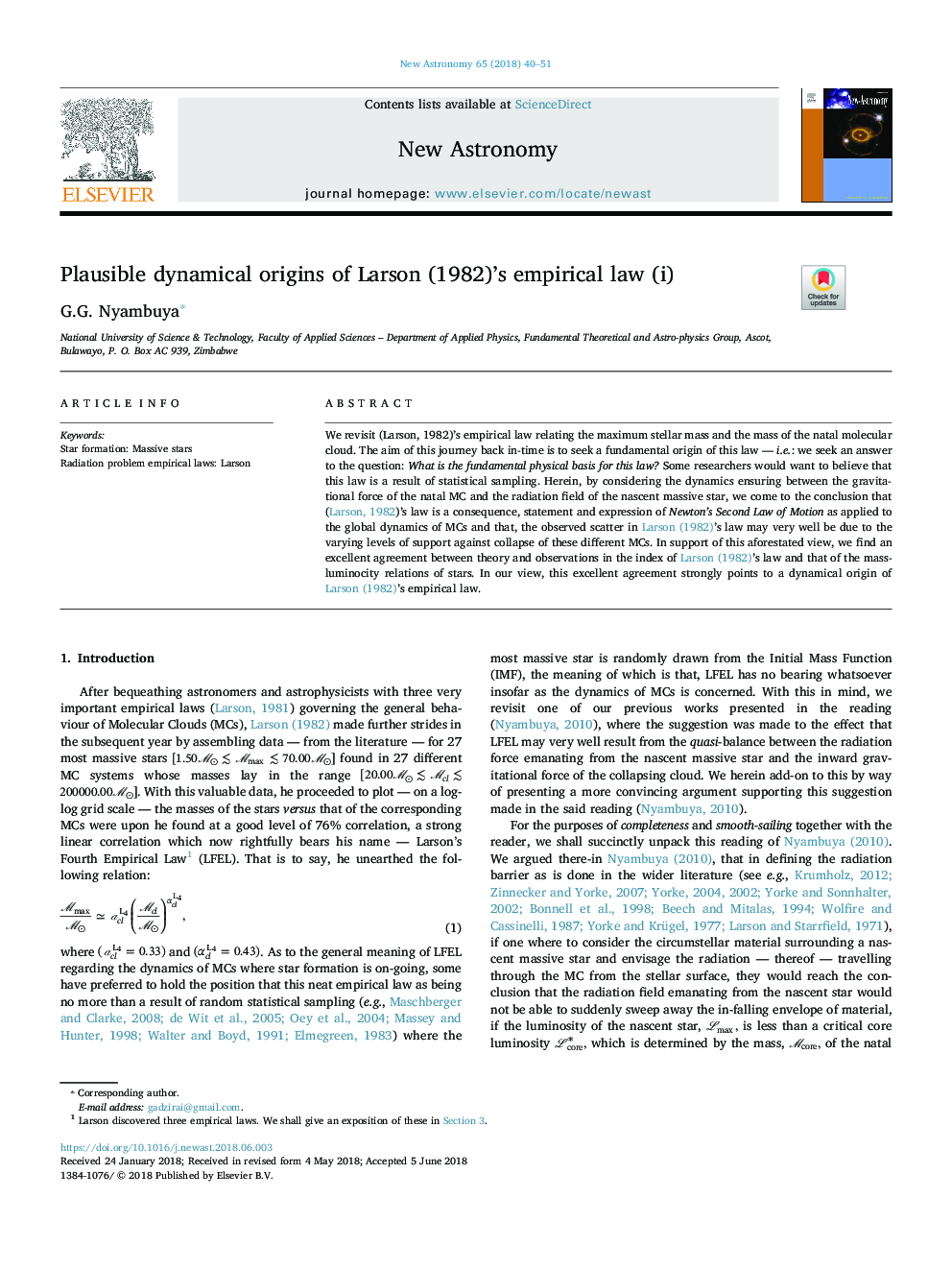| Article ID | Journal | Published Year | Pages | File Type |
|---|---|---|---|---|
| 8141247 | New Astronomy | 2018 | 12 Pages |
Abstract
We revisit (Larson, 1982)'s empirical law relating the maximum stellar mass and the mass of the natal molecular cloud. The aim of this journey back in-time is to seek a fundamental origin of this law - i.e.: we seek an answer to the question: What is the fundamental physical basis for this law? Some researchers would want to believe that this law is a result of statistical sampling. Herein, by considering the dynamics ensuring between the gravitational force of the natal MC and the radiation field of the nascent massive star, we come to the conclusion that (Larson, 1982)'s law is a consequence, statement and expression of Newton's Second Law of Motion as applied to the global dynamics of MCs and that, the observed scatter in Larson (1982)'s law may very well be due to the varying levels of support against collapse of these different MCs. In support of this aforestated view, we find an excellent agreement between theory and observations in the index of Larson (1982)'s law and that of the mass-luminocity relations of stars. In our view, this excellent agreement strongly points to a dynamical origin of Larson (1982)'s empirical law.
Related Topics
Physical Sciences and Engineering
Physics and Astronomy
Astronomy and Astrophysics
Authors
G.G. Nyambuya,
